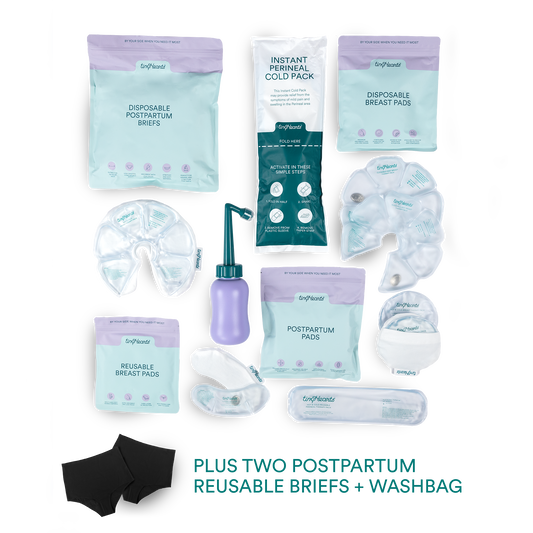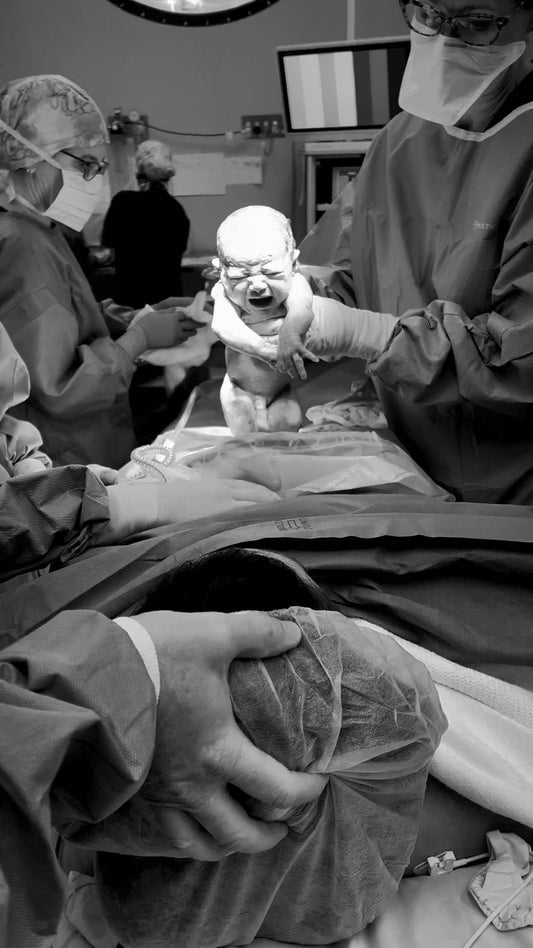At Tiny Hearts, our mission is to empower parents with the knowledge and tools they need to protect their little ones. Over the years, one of the most common questions we’ve been asked is about suction-based anti-choking devices: Should you have one at home?
A Mum’s Story That Changed Everything
Recently, a beautiful mum and follower reached out. Heartbreakingly, she had lost her little girl to choking. She wanted to talk with me and challenge the way I communicate with the Tiny Hearts community about anti-choking devices.
We ended up meeting in person. She told me about that awful day, what she did, and what she wishes she could change. Sitting across from her, it became clear that even if a device gave her just a one-percent better chance of saving her child’s life, that chance mattered.
That conversation made us look again at the evidence.
Why I’ve Been Apprehensive About These Devices
I’ve never said “don’t get one.” What I have questioned is their place. My biggest concern has always been that parents might think buying one of these devices means they don’t need to do first aid training. Even though people often say that isn’t the case, as an industry we are seeing fewer people complete training, with many parents seeking reassurance through products instead. For some, purchasing a device creates a false sense of security rather than building the real confidence that comes from hands-on training.
What I’ve said previously still stands: I’ve never seen one of these devices used after proper choking treatment has been carried out first. That has always been at the core of my concern, along with the fact that only a small amount of independent research exists. My mission has always been to keep first aid at the centre because it is the gold standard. But after this conversation, I see there is value in sharing and communicating our stance much more clearly.
What the Evidence Says
In Australia, there are currently two TGA listed devices available: the LifeVac and the DeChoker. Being listed on the Australian Register of Therapeutic Goods means they can legally be sold here, but it does not mean they are endorsed as more effective than standard first aid or included in official guidelines.
The overall evidence on these devices is still very limited. Most of the studies so far have been done on manikins or cadavers, not in real-life emergencies. A small number of observational studies have looked at actual cases, but overall the research is low in quality and independence.
Across the studies, one theme is consistent: LifeVac has generally performed better than DeChoker. In manikin trials, LifeVac cleared obstructions more often and more quickly than DeChoker.
In the most recent independent study of real adult cases, LifeVac successfully cleared the airway in 151 out of 157 cases (96%), while DeChoker did so in 27 out of 29 cases (93%). These results are encouraging, but they are still based on small numbers and limited to adults, not children.
Importantly, no study has proven that either device is more effective than standard first aid. First aid remains the gold standard.
Tiny Hearts Stance on Anti-Choking Devices
After reviewing the most recent body of research and evidence, we can see that anti-choking devices do have the potential to help. The results are encouraging, even though the studies are still small and limited in independence.
Most researchers describe these devices as adjuncts, to be considered only after first aid has been attempted and has not worked. In Australia, that means after back blows and chest thrusts. And for that reason, the most important thing you can do is learn first aid.
What treatment looks like if your child is choking:
- Start with choking first aid: back blows, then chest thrusts.
- If those steps are not working and a device is available, try an anti-choking device.
- If the airway is still not cleared and your child is unconscious and not breathing, move straight to high-quality CPR.
First aid guidelines can take years to update as new evidence builds. At Tiny Hearts, we will not wait if there is a chance to save more little lives. We see potential in anti-choking devices, and hence our official stance is:
First aid is the gold standard. Parents must learn and use choking first aid first. If those steps fail, and a device is available, it is reasonable to try it before moving quickly to high-quality CPR. Anti-choking devices should never replace training, but they may provide an extra chance when every second counts.
Our Hope for the Industry
The industry around anti-choking devices will continue to grow. Our hope is that as it does, it becomes more ethical, more transparent, and always centred on what truly matters: saving lives, not selling products.
And who knows… we built the world’s leading baby first aid movement. We might just be the ones to build the world’s best anti-choking device too.
References and Further Reading
Independent and Peer-Reviewed Studies
-
Dunne et al. (2023). Resuscitation Plus. Prospective two-year evaluation of suction-based airway clearance devices (LifeVac n=157, DeChoker n=29).
-
Gregory et al. (2021). Resuscitation Plus. Randomised manikin crossover trial: LifeVac vs DeChoker vs abdominal thrusts.
-
BMC Medical Education (2023). Manikin trial with health-science students measuring time-to-completion.
-
Cardalda-Serantes et al. (2023). BMC Medical Education. Simulation study comparing usability of LifeVac and DeChoker.
-
Laryngoscope Investigative Otolaryngology (2023). Cadaver study of anti-choking devices, minimal success reported.
-
Resuscitation Council UK (2020). Systematic review and position statement on suction-based airway clearance devices.
-
ANZCOR Guideline 4 (Australia). Current guideline for choking treatment: back blows, chest thrusts, CPR.
Other Studies and Reports Cited by LifeVac
-
Juliano & Trupiano (2017). American Journal of Emergency Medicine. Human cadaver model: LifeVac effective in 49 of 50 attempts.
-
Journal of Pediatric Critical Care (2024). 10-year retrospective review: 299 children under 5 successfully resuscitated with LifeVac.
-
Frontiers in Medicine (2022). Registry-based outcomes of LifeVac use (manufacturer-led).
-
International Journal of Clinical Skills (2017). Manikin studies assessing LifeVac effectiveness.
-
Pediatrics & Therapeutics (2016). Early simulation results of suction airway clearance devices.
-
International Journal of Pediatric Otorhinolaryngology (2019). Pediatric-focused simulation study with LifeVac.
-
ClinicalTrials.gov NCT06659796. Ongoing large-scale survey of LifeVac purchasers (approx. 2930 participants).
-
Systematic review (2022). Pooled analysis of registry and simulation data; high reported success but low certainty of evidence.








